Rehabilitation Exercises for Frozen Shoulder
What is it?
A frozen shoulder usually follows a characteristic pattern of freezing (with pain and progressive loss of movement), followed by the frozen phase (with significantly reduced movement) and then later thawing (as pain settles and movement improves).
What does it involve?
Reducing pain
- Start by avoiding activities and movements that increase pain during this period. All movement or exercises should be pain free.
- Use hot pack while you are doing your stretches. This can help to reduce your pain and improve your muscle extensibility.
Improving movement
Here are some simple exercises you can start with. Ensure that these exercises are pain-free.
1. Pendulum
Lean over with your good arm supported on a table. Relax the arm on the painful side and let it hang straight down. Move your body in circles and use the momentum to swing your arm. Let gravity gently sway your arm.
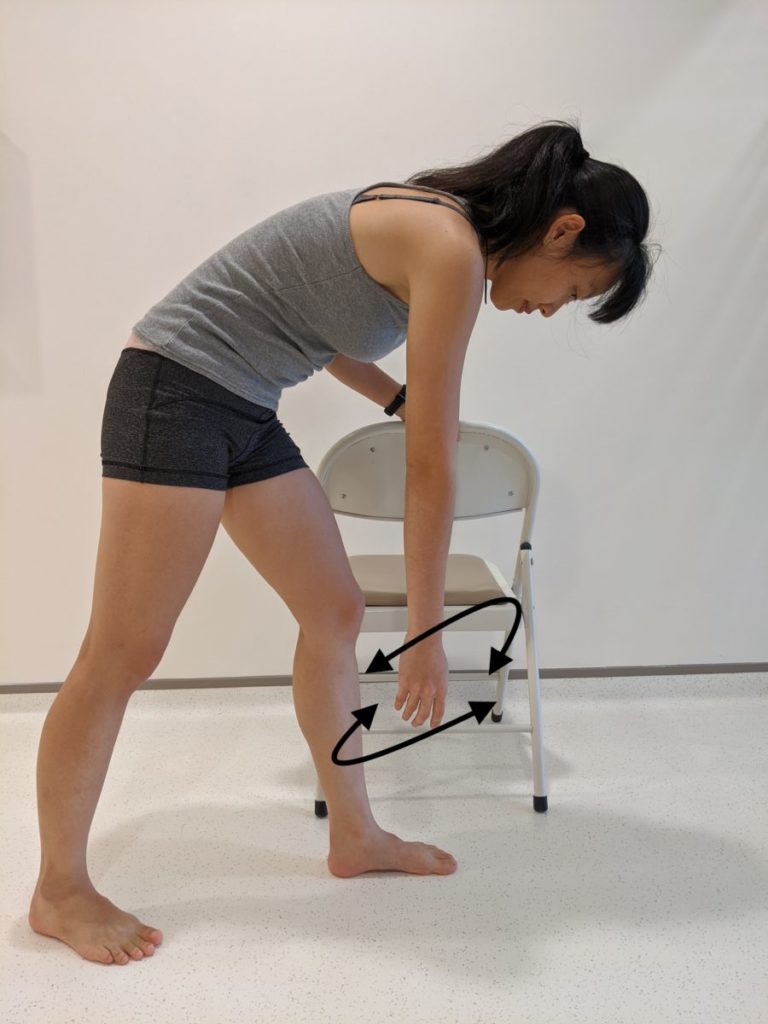
2. Wand exercises
Hold a wand/ stick with both arm. With the assistance of the non-painful arm, move your shoulder in all different directions.
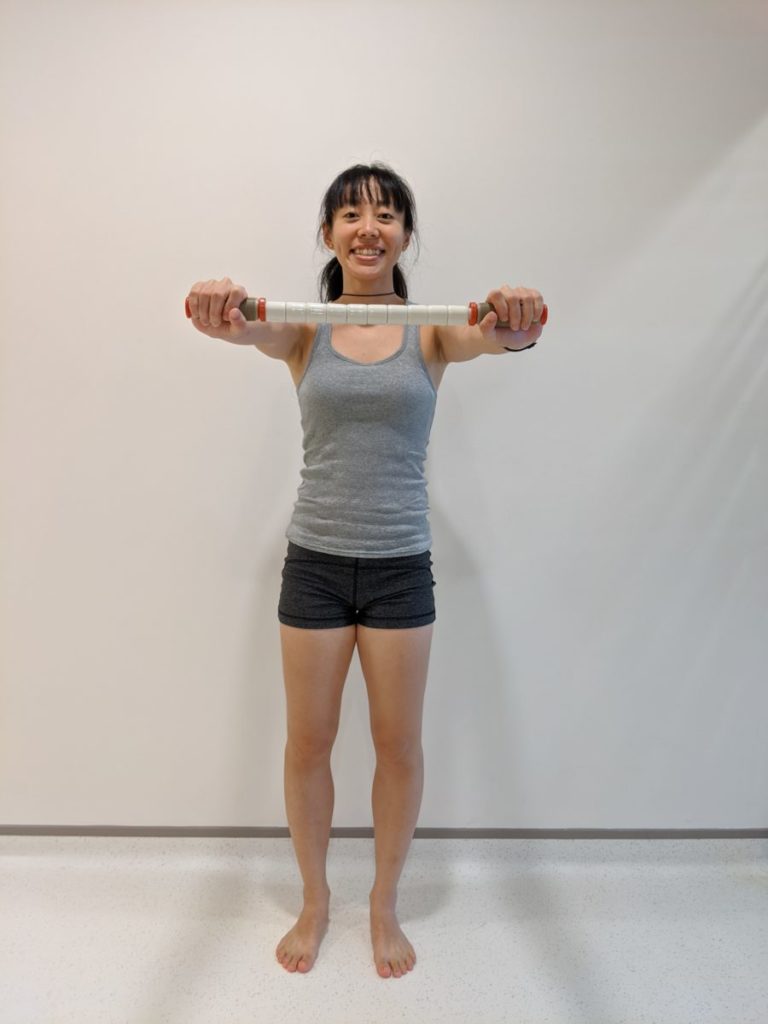
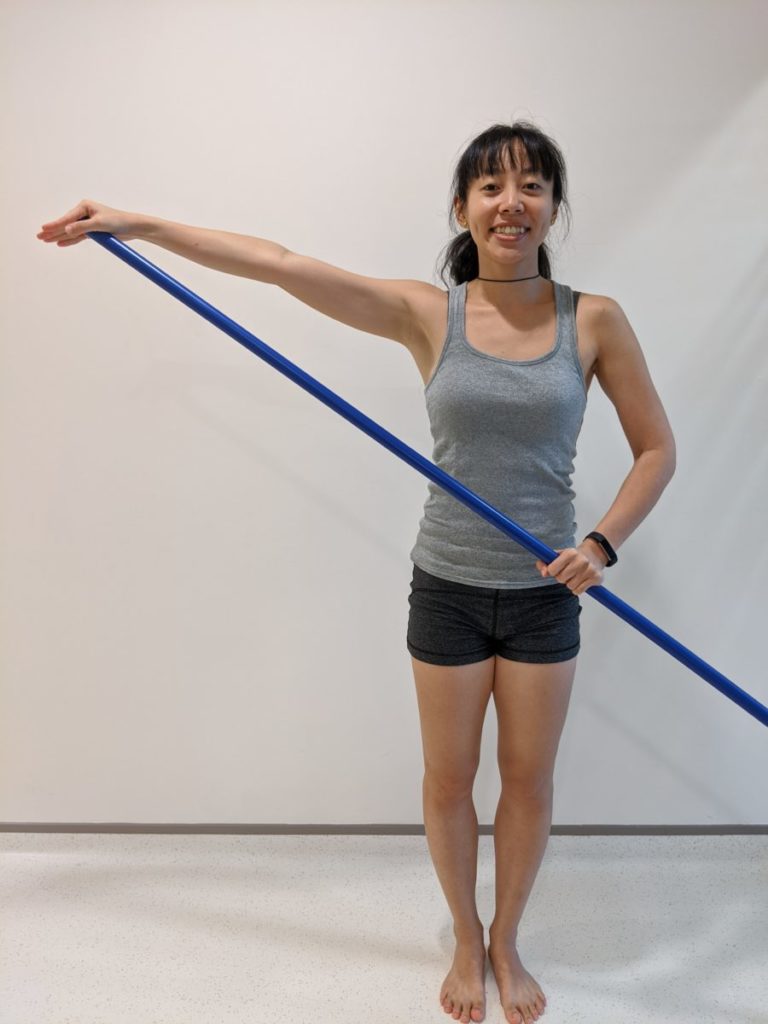
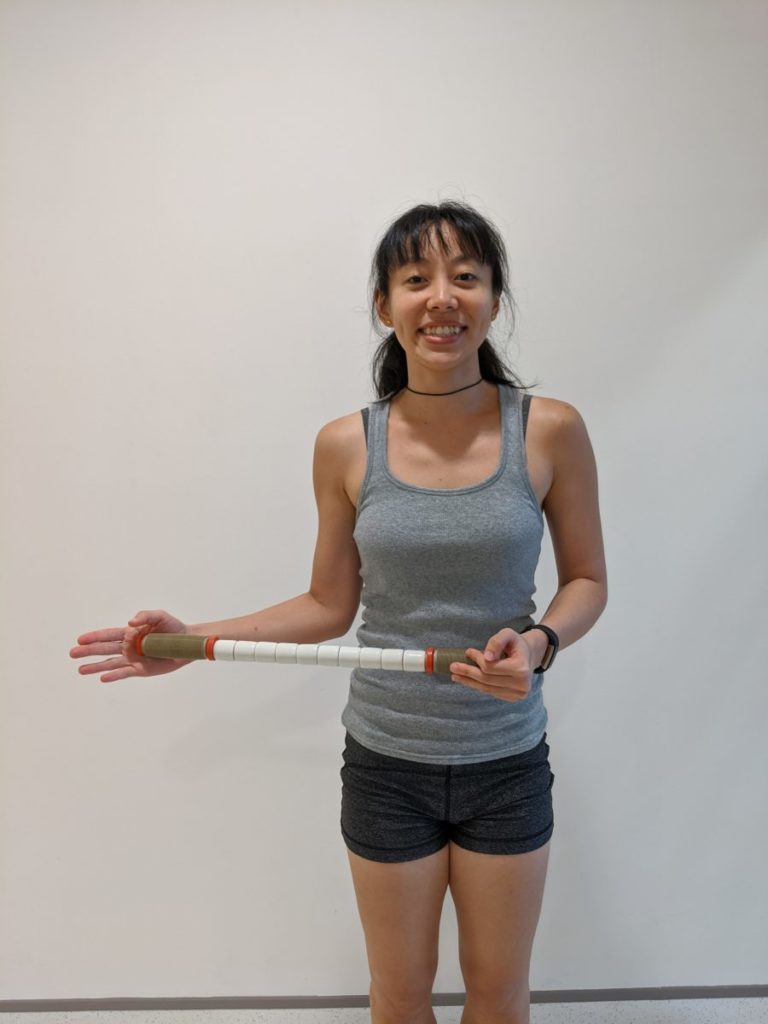
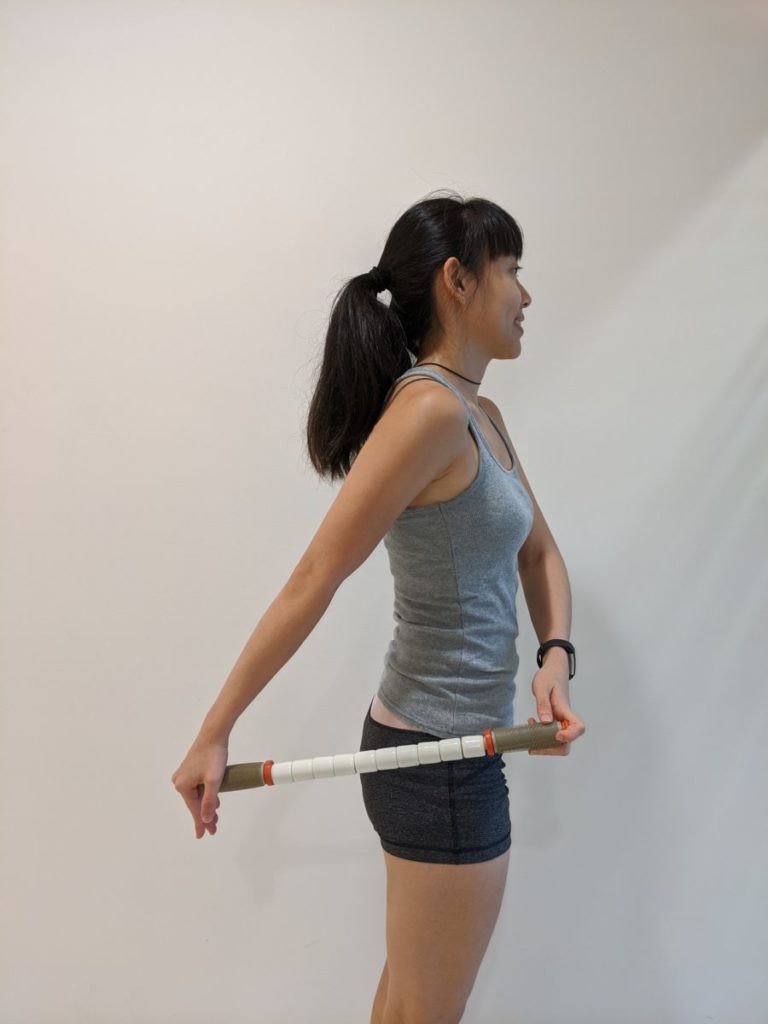
3. Stretches
Posterior cuff stretch: Bring the painful arm across your chest and support it with your other arm. Ensure your arm is below your chin. Hold this position for 30 seconds and repeat 3 to 5 times. Ensure that this stretch is pain free.
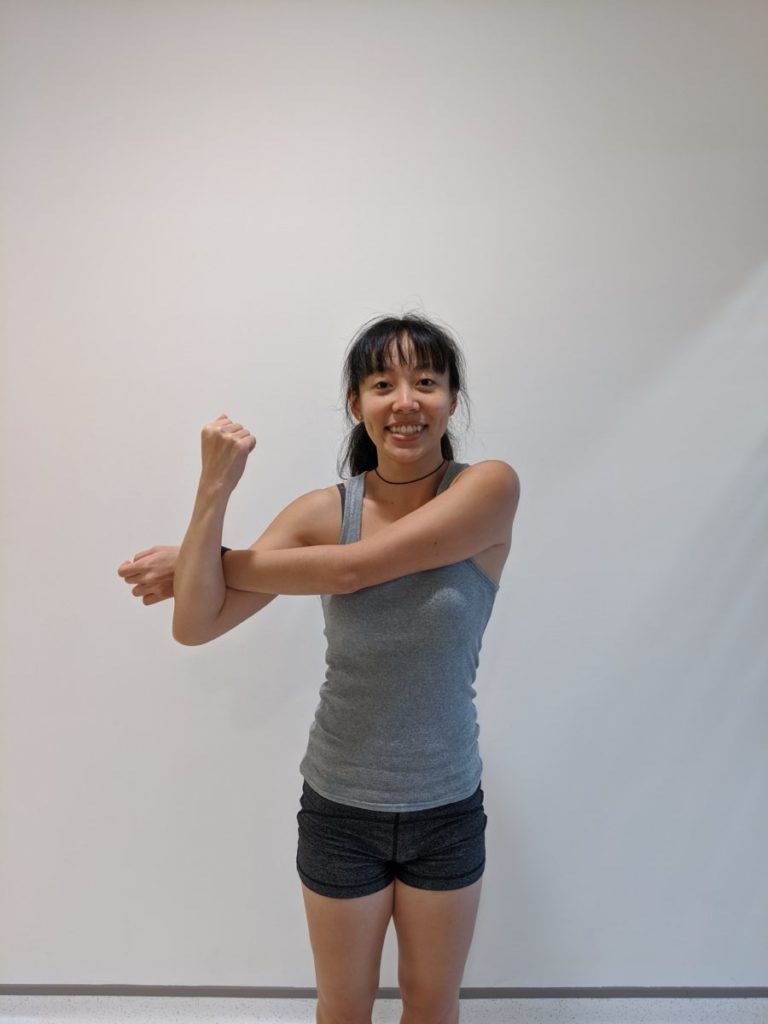
Pectoralis stretch: Stand in a corner with both hands slightly above your head on the wall. Slowly lean forward until you feel a stretch in the front of your shoulders. Hold 30 seconds and repeat 3 to 5 times.
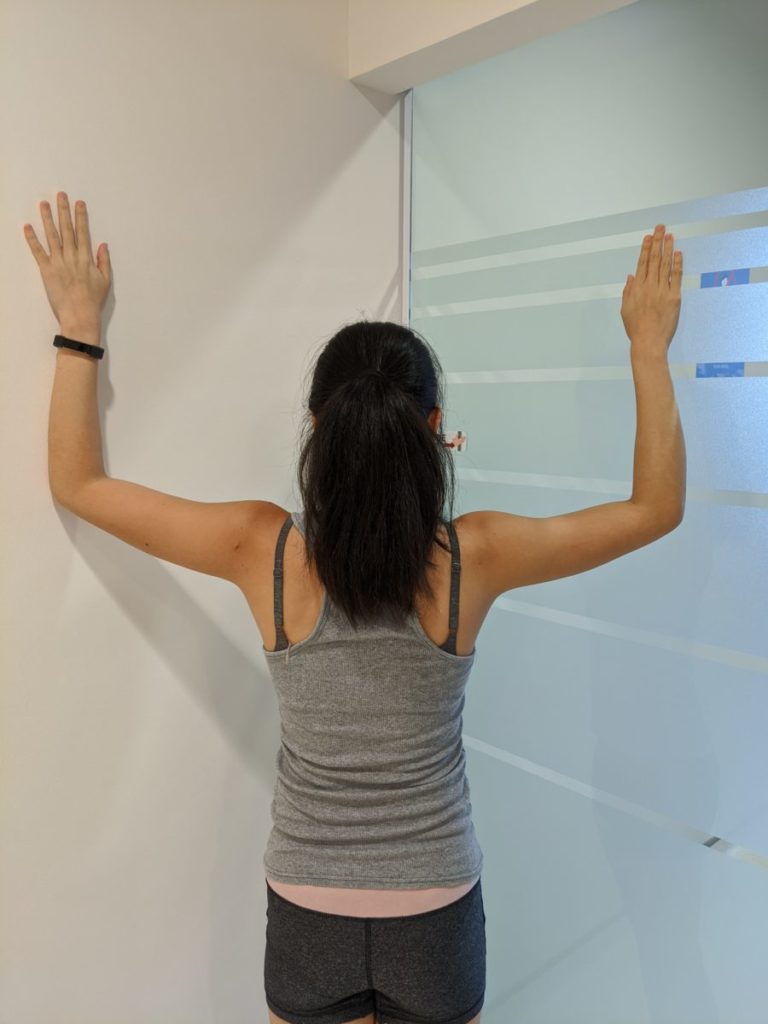
What can be treated?
Early rehabilitation attempts to reduce the pain and maintain the range and late stage rehabilitation works on improving strength and range.
Rehabilitation is essential for a frozen shoulder as it can help reduce the progression and functional limitations associated with it through:
- Reduction of pain
- Gradual increase in movement, guided by symptoms
- Preventing stiffness from setting in
What are the benefits, risks, and side effects?
There are very few risks and side-effects associated with rehabilitation exercises to treat your symptoms. At most, there may be a temporary flare of the symptoms, due to re-activation of areas that have been offloaded due to pain or other limitations.
The key benefit is that rehabilitation can help with recovery of function and return to normal activity in a conservative way, which may or may not require the addition of other treatments. This forms the core to your recovery.
What do I need to do afterwards?
It is imperative that you continue to do the exercises as regularly as possible and attend your follow up appointments if provided. This enables the physiotherapy team to monitor your progress and adapt your exercises to your individual needs.
What are the common misconceptions?
It is often expected that once you attend a physiotherapy session, that your symptoms will improve without further input. In most situations this is not the case and it requires you, as a patient, to be proactive in your rehabilitation.
If you feel that your symptoms are not improving, or are worsening (such as night time pain), and you have tried the above, it would be good to have your problem assessed as soon as possible.
Visit your sports medicine team for a detailed assessment with your specialist physicians and physiotherapists. Together, they can help investigate and develop a rehabilitation plan that is specific for you and your sport, and advise on methods to gradually improve the shoulder function.
